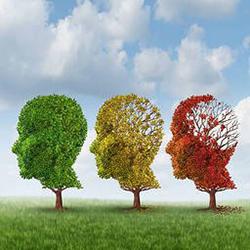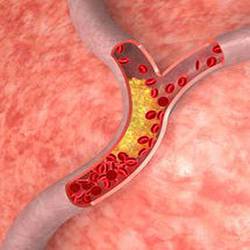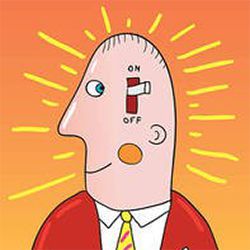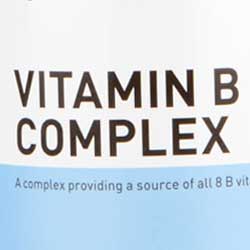ADD / ADHD and Behavioral Problems Nutritional Causes, Treatmen and Prevention
| Disorders
Attention Deficit Disorder (ADD) and Attention Deficit Hyperactivity Disorder (ADHD) have become a medical craze of unparalleled proportions. As many as 20% of children (some estimates are higher) - the majority of them boys - are now on any of a number of drugs marketed to treat ADD, or ADHD (Ritalin,[1] Cylert, Dexedrine, Adderall, Attenade, Concerta, Focaline, Metadate, Strattera...). About 35% of all children referred to mental health clinics are treated for Attention Deficit Hyperactivity Disorder.
It is one of the most prevalent of all childhood psychiatric disorders, although ADD / ADHD is a common diagnosis for adults as well.
What causes ADD / ADHD?
With attention deficit and Behavioral Problems at times running in families, many medical researchers are convinced that a genetic component is driving this condition, with several independent studies [2] pointing to a genetic overlap with other neuropsychiatric conditions such as autism spectrum disorder, schizophrenia, and bipolar disorder.
Some doctors believe that there may have been damage to the brain during pregnancy or delivery, from drug use during pregnancy (e.g. acidominophen / Tylenol),[3] from alcohol, from overexposure to radiation, from infectious diseases, toxemia, etc..., while after birth, ADD may result from meningitis, seizures from fever, head injury, encephalitis, or heavy metal toxicity.
Other practitioners disagree and cite lack of evidence for any of these claims, going as far as calling ADD another example of "scientific medicine" inventing a psychiatric label when it cannot explain, resolve, or find a physiological cause for specific medical symptoms.
This may certainly be true with another behavioral condition called "Oppositional Defiant Disorder" (ODD), that is marked by temper tantrums and a defiant, uncooperative and hostile conduct toward authority figures.

About 10% of children fall into that category where their disruptive behavior - including hitting, kicking, and swearing - frequently gets them expelled from kindergarten or school. While psychiatric labeling may take away the blame from a problem child or the type of parental upbringing, it still doesn't change the fact that ill-behaved children have always been around. However, they either had to smarten up, or suffer the consequences of becoming a dysfunctional adult - or even ending up with a criminal record.
How safe are the Drugs used in the treatment of ADD?
Proponents of drug therapy claim that symptoms of ADD are caused by neurological dysfunctions within the brain and point to studies done with PET scans confirming that there is a definite difference in brain functions between groups of individuals diagnosed with Attention Deficit Disorder, and those without it. According to their theory, specific chemicals called neurotransmitters may be lacking in individuals with ADD, and where subsequent to taking medication, brain activity appeared to be much more like that of the normal group.
They also claim that the areas of the brain in the ADD group with below-normal brain activity are known to be associated with such functions as attention, concentration, as well as planning and organization. Those same proponents also stress the relative "safety" of these stimulant drugs, while being successful in decreasing hyperactivity, and at the same time improving attention span in approximately 70% of those treated - with only 5 - 10% getting worse.
As a result, these drug-treated children supposedly feel better about themselves and enjoy better selfesteem, with no evidence that being treated for years with stimulant drugs will have a greater likelihood of abusing drugs or narcotics during their adolescent years.
However other research shows that many children who have taken medications for Attention Deficit Disorder or Attention Deficit Hyperactivity Disorder continually have drug addiction problems with either legal drugs and/or illegal drugs for the rest of their lives. One reason for this could be that they have been conditioned to believe that taking drugs will solve life's problems and difficulties.
Ritalin (methylphenidate) is classified among Schedule II controlled substances, which have a high abuse potential with severe psychic or physical dependence liability, and are substances that have therapeutic utility. Schedule II drugs include amphetamine (Dexedrine), cocaine, morphine, codeine, opium, pentobarbital, oxycodone (Percodan), and others. Ritalin has been sold on the black market as a form of speed.
Some side effects encountered with these stimulants include personality changes characterized by a state of excitement, confusion, suicidal thoughts, depression or withdrawal, as well as loss of appetite, weight loss, irritability, restlessness, sleeping problems, stomach ache, headache, rapid or irregular heartbeat, elevated blood pressure, and sometimes muscle twitches of the face and other parts of the body, which could lead to Tourette's Syndrome. There is also some controversy of whether these drugs cause suppression of growth.
What are some Medical or Nutritional Causes of ADD / ADHD?
Patients diagnosed with Attention Deficit (Hyperactivity) Disorder may fit one or more categories:
- Vision or Hearing problems in children - when undetected - may sometimes lead to an inaccurate diagnosis of Attention Deficit Disorder.
- Hyperthyroid or Hypothyroid problems can both trigger a number of attention-disruptive symptoms. Serum levels may, or may not be within a normal lab range, however false positives or false negatives with thyroid panels are quite common. While elevated / irregular pulse or nervousness are commonly experienced with hyperthyroid functions, apathy, fatigue and trouble concentrating are some symptoms encountered with hypothyroid functions.
Spinal alignment problems at T4 - T6 can also trigger similar symptoms. Supplements such as PABA, magnesium, or manganese (as individually indicated) will generally help with mild hyperthyroid activity, while iodine, Vitamin B6 and/or Vit B12 may be helpful with very mild hypothyroid activity.
Exposure to bromine-based fire retardants used in carpets, mattresses, upholstery, furniture and some electronic equipment have also become suspect for causing a number of medical conditions, including hypothyroidism. Animal research has linked behavioral problems, as well as neurodevelopmental and attention deficit hyperactivity disorders to bromides. The European Union has already banned some PBDE (polybrominated diphenyl ethers) compounds for these reasons. - Food Intolerances or Allergies are high on the list of offenders to provoke ADD / ADHD or other behavioral symptoms and problems. While milk, eggs, nuts, shellfish, wheat and soy products are common triggers for people with food sensitivities or allergies, Simple Sugar(s) have more of an effect on mood and hyperactivity than many other dietary factors, although some "experts" on ADD or ADHD continue to challenge or dispute that fact.
Additional problem sources to consider include pets, mold, artificial food coloring and preservatives, artificial sweeteners (aspartame), dust mites, caffeine, and tobacco smoke. - Calcium and/or Magnesium deficiencies are very common causes of ADD and ADHD. Since they are always accompanied by light and/or restless sleep, along with daytime sleepiness, they are easily spotted and remedied through supplementation or a change in diet. (see also "Calcium & Magnesium").
- High Copper and low Sulfur - with or without elevated Aluminum - represent one of the most common causes of ADD / ADHD. Symptoms typically include a "foggy" mind, lack of concentration, and poor memory. This particular chemical pattern is as common with kids as it is with adults, and requires not only supplementation of copper antagonists (molybdenum, chromium, sulfur [MSM], or Vitamin C - as individually indicated), but also avoidance of beverage or food sources high in copper and aluminum. Copper sources include cocoa / chocolate products, coffee, tea, soy products, liver, nuts, seeds, shellfish, wheat germ..., while aluminum sources include drinks packaged in aluminum lined containers (tetra packs) and some antacid / stomach remedies. (see also "Copper" and "Sulfur").
- Iron deficiency may be suspect with some forms of ADHD. In a study led by Dr. Eric Konofal,[4] 84% of children diagnosed with ADHD were found to have abnormally low levels of ferritin (an iron storage protein), compared to 18% of children without ADHD. Low iron levels in the brain are also known to alter dopamine activity, which is involved in controlling movement, and there is a link between iron deficiency in infants, and slower brain development and poorer school performance later in childhood.
- Tyrosine is an amino acid that the body uses to synthesize dopamine and norepinephrine, the two neurotransmitters believed to be involved in ADHD. Some studies have shown that children with ADD may have lower levels of tyrosine, which can be increased through supplemental or dietary sources. L-Tyrosine treatment or supplementation is contraindicated when on certain medications, or with specific medical problems, so a consultation with a practitioner is important for proper evaluation.
- Cell phone use: A study published in the journal 'Epidemiology' (2008) [2] followed by measurable aggressive behavior. The increase in dopamine production in the brain during video game play is substantial, being injected with amphetamines, or taking the ADD drug Ritalin. The change in brain chemistry is the first hard evidence that video game playing is addictive, like a dose of speed. Accordingly, these kids are addicted to raised dopamine levels and can't concentrate on anything without them.
Studies have attributed similar effects on the brain when listening to music, particularly when studying. Classical music, with an average 50-70 beats per minute was optimal for learning. Interestingly, it also provided health benefits such as lower blood pressure, lower muscle tension, and a slower pulse rate. In every one of several human and animal studies done of having subjects listen to "Mozart" versus "Hard Rock", the effects of classical music were in comparison to the control group consistently of a calming, soothing nature, while the Hard Rock group invariably lead to an aggressive, or even violent behavior.
Statistics are even more convincing: In different experiments, mice listening to classical music ran a maze from 25% to 70% faster than those who were not listening to any music. "Modern" music (Punk Rock, Rap...) had them run the maze anywhere from 20% to 300% slower! Another study showed that listening to the classical music of Mozart can improve an IQ score by up to 13 points, while "Rock and Roll" has a reverse effect. - Lack of Parental Discipline is what many people believe to be the most widespread cause of ADD, ADHD, and other behavioral problems, and they may not be too far off the mark. While this will hit a raw nerve with those parents whose children can do no wrong (no matter how ill behaved they are), it is very obvious that most kids nowadays lack a respect of authority, and they all seem to very much know their rights - particularly that governments protect the action of children through various legislations and even step in against those parents who see fit to teach their kids some rules and hands-on discipline.
Times have certainly changed... particularly in regard to Mental Health! Visiting shopping malls, hair salons, or even many of the better dining establishments can be quite an awakening experience in the way many of them see fit to musically entertain their customers. Emphasis used to be on providing a relaxing atmosphere with ambient 'elevator-type' of background music to enhance that shopping or dining experience. Now, one establishment is trying to outdo the other by greeting the customer right at the door with their canned heavy metal beat, which is only challenged by the tinted sports car driving by with its mega-watt audio system creating a sonic boom within a mile radius.
In most cities, searching from one end of the dial to the other, one is hard-pressed to find a radio station that still caters to normal, well-adjusted, non-medicated adults, who prefer to get through the day without having their brain tortured with that driving beat.
Likewise, videographers used to pride themselves in applying every possible skill to stabilize their shots to provide smooth video footage for their audience. Now, their pieces of "art" consist of rapidly zooming in and out a minimum number of times per minute, tilting their cameras side to side, while continuously moving around as if suffering from an 'Ants-in-the-Pants' syndrome.
In turn, video editors complement these "master pieces" by trying to utilize every possible strobe effect, bright, flashing light and head-spinning transitions their editing equipment has to offer. What used to be an excuse for amateur home video has graduated into acceptance with many commercial video productions.
The reward for sitting through these news, commercial, documentary or Hollywood-style video exhibits could be a pounding headache for those who still enjoy the possession of an unadulterated brain, while the sound-enhanced flashing of animated cartoons is just waiting to give some kids the ultimate trip in form of a brain seizure - as happened to hundreds of Japanese children some time ago.
Just like a change in lifestyle is preferable to numerous dietary remedies when trying to lose weight, a change in lifestyle / recreational activities, and better nutrition - if indicated - is also preferable to drug treatments with children and adults when dealing with ADD, ADHD and ODD. Admittedly, with the cult-like following the video, music, and motion picture industry enjoys, and considering the number of prescriptions that are written for mental health problems every year, this seems like a difficult - if not impossible task.

 Manganese may help with some symptoms of Parkinson's disease such as muscle rigidity and twitching...
Manganese may help with some symptoms of Parkinson's disease such as muscle rigidity and twitching...
 Research shows that phytosterols such as beta-sitosterol may help normalize the function of natural killer cells and T-helper lymphocytes...
Research shows that phytosterols such as beta-sitosterol may help normalize the function of natural killer cells and T-helper lymphocytes...
 Iron deficiency may be suspect with some forms of ADHD. 84% of children with ADHD were found to have abnormally low levels of ferritin...
Iron deficiency may be suspect with some forms of ADHD. 84% of children with ADHD were found to have abnormally low levels of ferritin...
 A high intake of B Vitamins can trigger heart palpitations, HBP, major complications in patients with congestive heart disease...
A high intake of B Vitamins can trigger heart palpitations, HBP, major complications in patients with congestive heart disease...